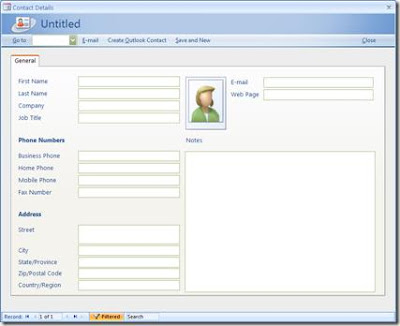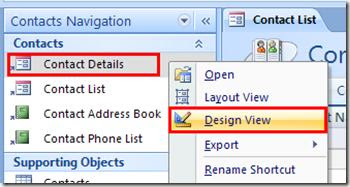Office Access 2007 includes a packet of binary stand-alone database applications. I usually use the templates to start a project on MS Access. With a template, you will not have to start from scratch - you have something to work from the beginning.
The trick is to find the right model that fit your needs. Usually, the models are good enough for the basic needs of generic data. In some cases, a little fine-tuning is initiated following the customer needs.
To start using MS Access, below are the steps to create a new Access file from templates. First click N to create a new access file, then choose the model categories. The models include some interesting patterns that you choose.
Choose a model that fits your needs. In the following example, I chose "Contacts" so that I can show you how to customize a database of contacts.
Give your file a name followed by defaults, it will be named after the model type. Click the Create button to create the file access.
The database should appear. You will see an Excel spreadsheet as an interface where you can make transactions such as adding a new contact entry.
If you click the button to add a new contact, it will open a new contact form where you can type in a contact detail.

Now, if you need this update to the form layout and labels? It's simple, just right click on the name of the form to the left, then choose Design View:

With design, you can update the form of presentation and content.

You can also access an object from the design table to change the fields in the table. The example below is the contact with the table:

Here you May all fields with their data types. Be sure to use the appropriate data type for a field or you could end the inefficient file access. For example, use only the memory data type if you know that the area will take longer than usual one line of text, like addresses or messages.
Also, set the right field depending on the size, the maximum number of characters you'd expect on land. Do not use 100 characters for a field of e-mail.
I hope this short introduction to access models that you started with your small projects focused on the data. In future messages I'll show you how to display data from Access into a Web page using PHP.



